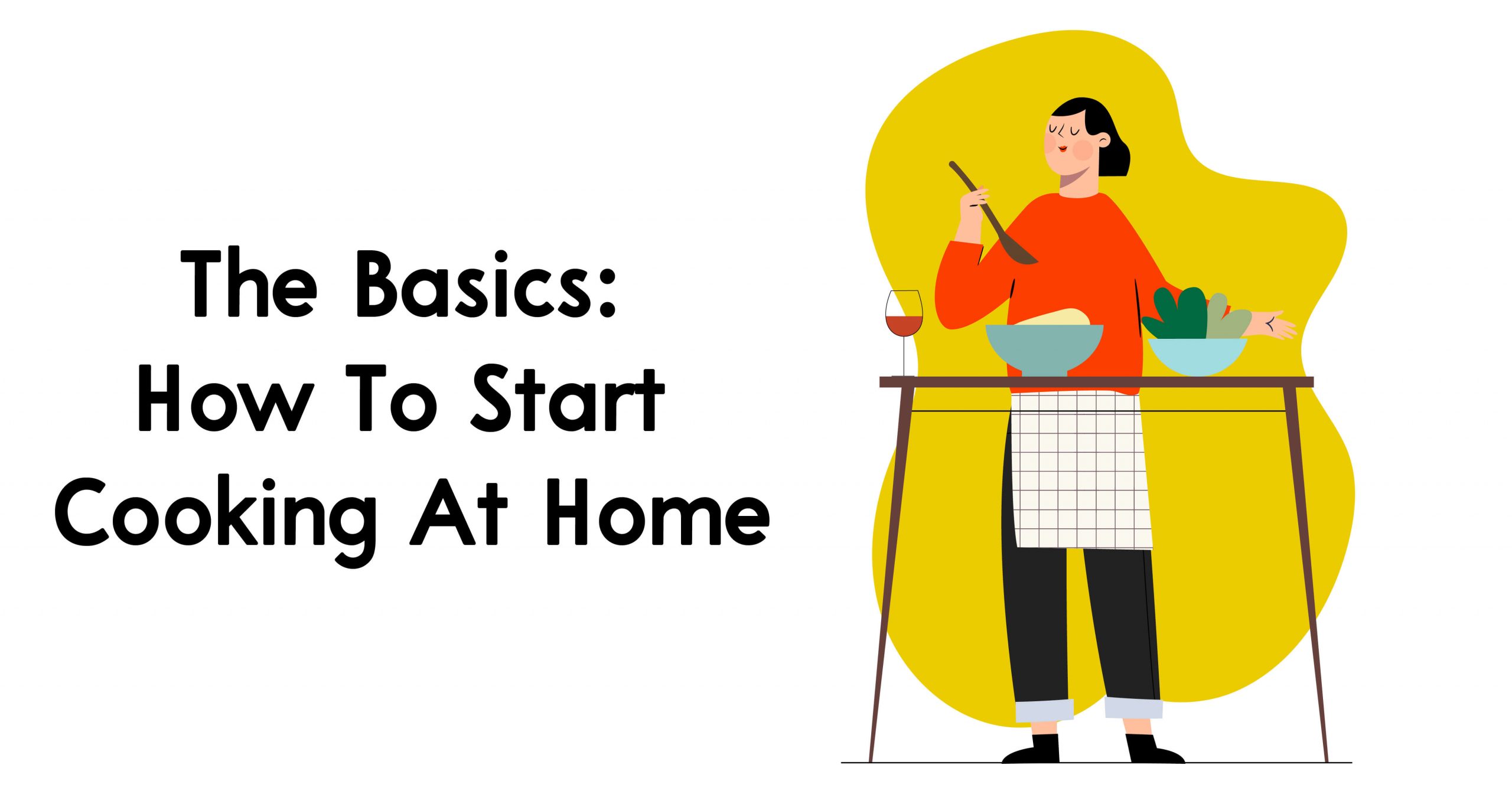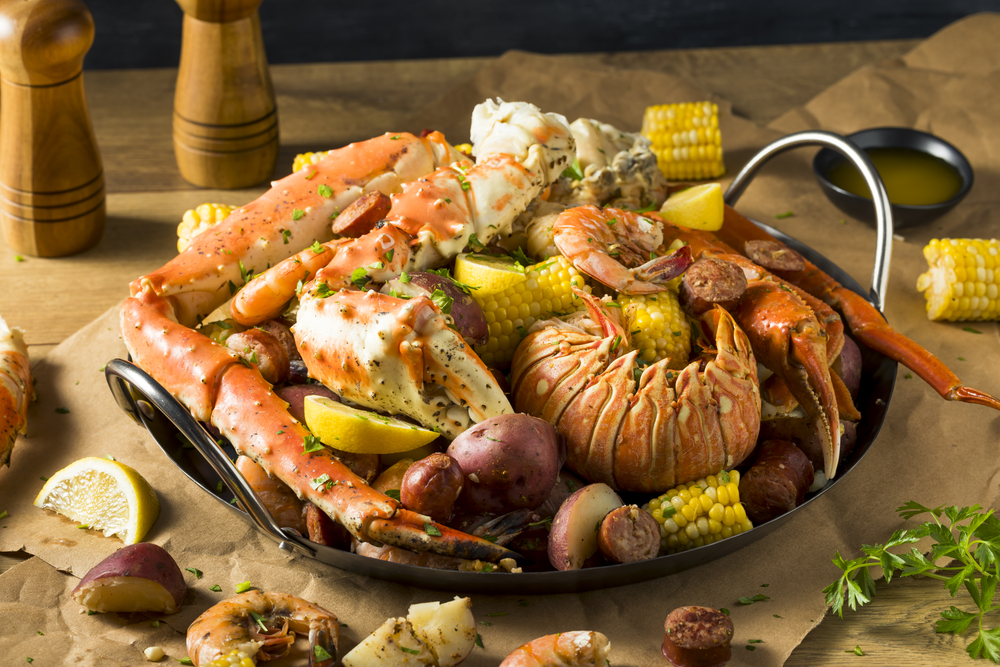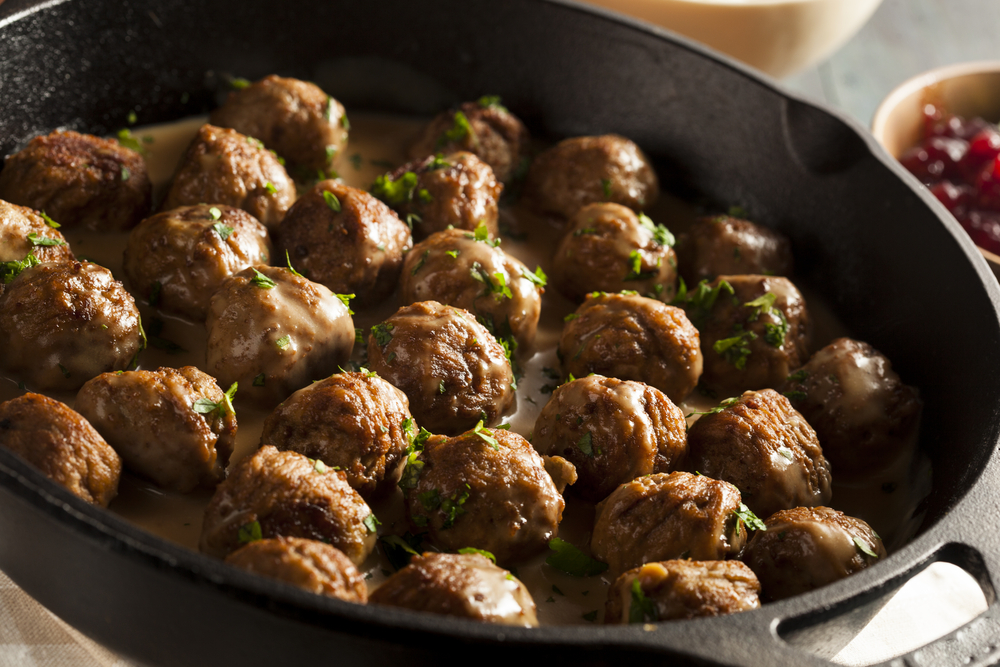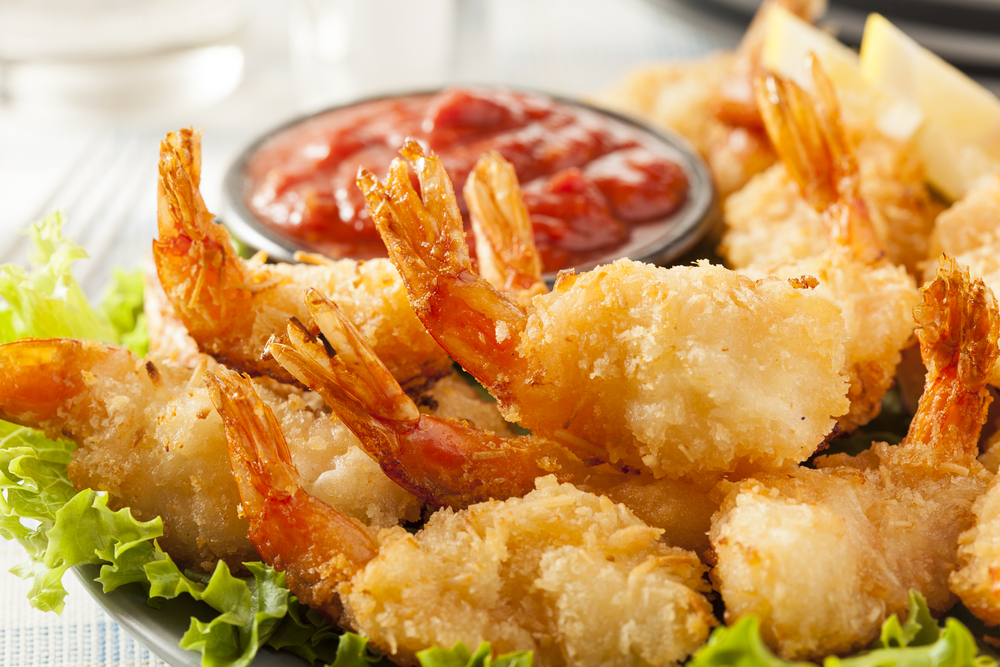Can you microwave cooked shrimp? This is a common question for seafood lovers who want to reheat leftover shrimp quickly.
The answer is yes, you can microwave cooked shrimp, but you need to be careful not to overcook it. Overcooking shrimp can make it rubbery and ruin its taste.
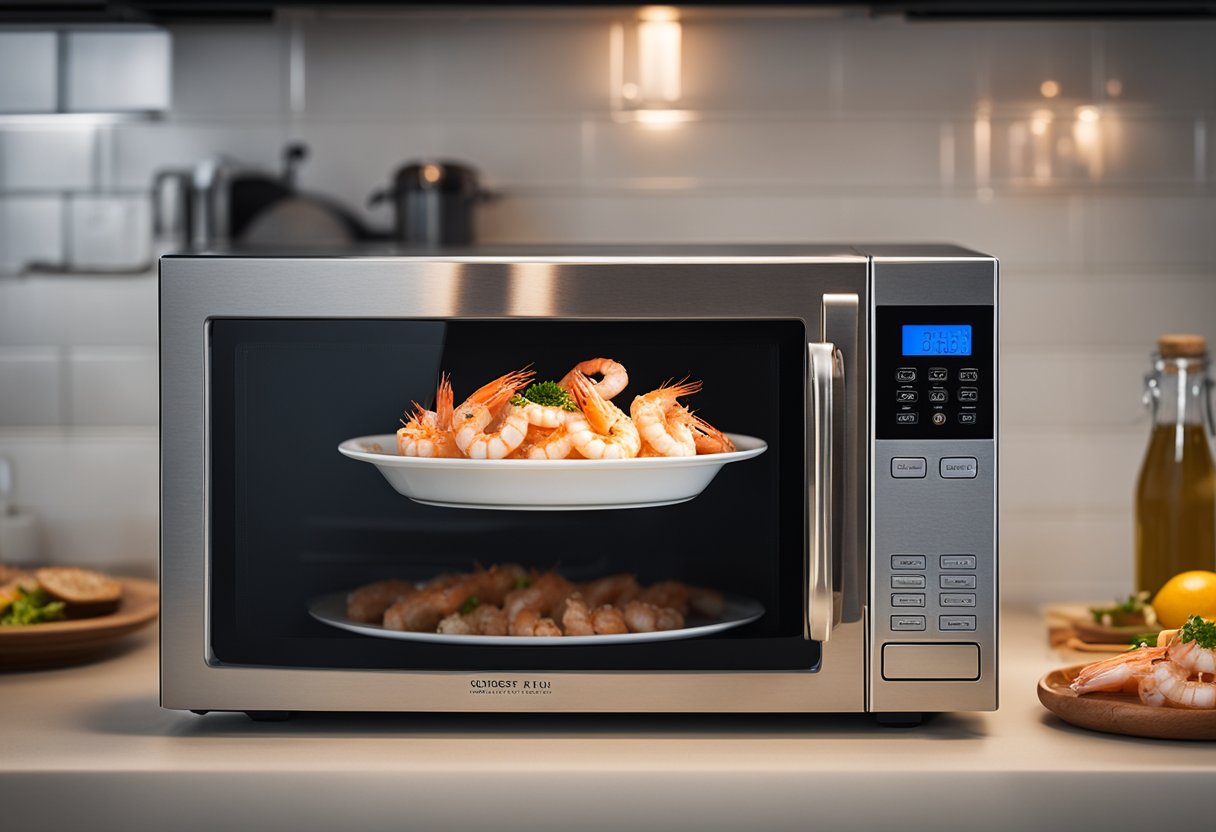
Microwaving cooked shrimp is a convenient way to reheat it, especially if you have a busy schedule. However, you need to follow specific steps to avoid overcooking and achieve the right texture.
In this article, I will guide you through the preparation, microwaving, and flavor enhancement of cooked shrimp. I will also provide alternative cooking methods for shrimp and tips for handling and storing it.
Key Takeaways
- Cooked shrimp can be microwaved, but you need to be careful not to overcook it.
- To microwave shrimp, you need to thaw it first, place it in a microwave-safe dish, and heat it in one-minute increments until it’s warm all the way through.
- To enhance the flavor of microwaved shrimp, you can add herbs, spices, citrus, or a sauce.
Understanding Shrimp and Microwave Cooking
As a seafood lover, I often wonder if I can cook shrimp in the microwave. Shrimp is a delicate seafood that requires proper cooking to retain its texture and flavor.
Microwave cooking is fast and convenient, but it’s essential to understand how it works to avoid overcooking or undercooking the shrimp.
Shrimp is a type of shellfish that is rich in protein, omega-3 fatty acids, and various vitamins and minerals.
Shrimp is a popular seafood that can be cooked in various ways, including boiling, grilling, sautéing, and frying. However, cooking shrimp in the microwave is a quick and easy way to prepare it.
When cooking shrimp in the microwave, it’s essential to consider the microwave wattage, cooking time, and temperature.
The wattage of the microwave determines how quickly the shrimp will cook. A higher wattage microwave will cook the shrimp faster than a lower wattage microwave.
Therefore, it’s crucial to adjust the cooking time and temperature accordingly.
The internal temperature of the shrimp is also essential when cooking it in the microwave. Shrimp should be cooked to an internal temperature of 145°F to ensure doneness and quality.
Overcooking shrimp can make it rubbery and ruin its flavor, while undercooking shrimp can make it unsafe to eat.
To cook shrimp in the microwave, place the cooked shrimp in a microwave-safe dish and heat them on high in one-minute increments until they are warm all the way through.
Be sure not to overcook the shrimp as this can make them rubbery and ruin the taste. Once the shrimp is reheated, it can be added to your favorite dish or eaten as is.
In conclusion, cooking shrimp in the microwave is possible, but it’s essential to understand how it works to avoid overcooking or undercooking the shrimp.
By considering the microwave wattage, cooking time, and temperature, you can cook shrimp in the microwave and enjoy a delicious seafood dinner in just minutes.
Preparation of Shrimp for Microwaving
When it comes to microwaving cooked shrimp, preparation is key to ensure that the shrimp is heated evenly and doesn’t become rubbery. Here are some steps to follow to prepare shrimp for microwaving:
- Choose a microwave-safe dish: When microwaving shrimp, it’s important to use a microwave-safe dish. A glass or ceramic dish is ideal, as they are less likely to leach harmful chemicals into your food.
- Remove the shrimp from the shell: If you are using raw shrimp, it’s important to remove the shell before microwaving. Frozen shrimp should be defrosted before removing the shell.
- Consider the size of the shrimp: The size of the shrimp will affect the cooking time. Larger shrimp will take longer to cook than smaller shrimp. It’s important to ensure that all the shrimp are a similar size to ensure even cooking.
- Arrange the shrimp in a single layer: To ensure even cooking, arrange the shrimp in a single layer in the dish. If you need to cook a large amount of shrimp, it’s better to cook them in batches to ensure they are evenly cooked.
- Cover the dish: Cover the dish with a microwave-safe lid or plastic wrap to prevent the shrimp from drying out.
By following these simple steps, you can ensure that your shrimp is perfectly cooked and ready to eat in just a few minutes.
Whether you are using fresh or frozen shrimp, microwaving is a quick and easy way to prepare this delicious shellfish.
Microwaving Shrimp: Step by Step
When it comes to microwaving cooked shrimp, it’s important to follow a few simple steps to ensure even cooking and avoid overcooking. Here’s a step-by-step guide to microwaving shrimp:
- Start by placing your cooked shrimp in a microwave-safe dish. If your shrimp is frozen, it’s important to defrost it first before microwaving to ensure even cooking.
- Cover the dish with a damp paper towel. This will help to keep the shrimp moist and prevent it from drying out during the cooking process.
- Microwave the shrimp on high for 30 seconds. Check the shrimp to see if it’s hot. If it’s not hot enough, continue microwaving in 10-second intervals until it reaches the desired temperature.
- Once the shrimp is hot, it’s ready to be added to your favorite dish or eaten as is. Be sure not to overcook the shrimp as this can make it rubbery and ruin the taste.
It’s important to note that microwaving times may vary depending on the size and quantity of your shrimp, as well as the power of your microwave.
To ensure even cooking, it’s recommended to stir the shrimp halfway through the microwaving process.
By following these simple steps, you can easily microwave cooked shrimp to perfection in just a matter of minutes.
Avoiding Overcooking and Achieving the Right Texture
As someone who loves to cook shrimp, I know that overcooking can ruin the texture and make it rubbery. But fear not, there are some simple tips to achieve the perfect texture every time.
Firstly, it is important to not overcook the shrimp. Overcooking can cause the shrimp to become tough and rubbery. To avoid this, cook the shrimp until it is just opaque and pink.
This should take no more than 2-3 minutes, depending on the size of the shrimp.
Another way to avoid overcooking is to not overcrowd the shrimp in the microwave-safe dish. Overcrowding can cause the shrimp to cook unevenly and lead to rubbery texture.
Instead, cook the shrimp in a single layer and cover with a lid to trap the steam. This will help the shrimp cook evenly and retain its moisture.
To achieve the right texture, it is also important to not reheat the shrimp for longer than 3 minutes. Reheating for too long can cause the shrimp to become rubbery and tough.
If you need to reheat the shrimp for longer, consider using a different method, such as reheating in the oven or on the stovetop.
In summary, to avoid a rubbery texture when cooking or reheating shrimp in the microwave, it is important to not overcook, not overcrowd the shrimp, and not reheat for too long. By following these simple tips, you can achieve the perfect texture every time.
Enhancing the Flavor of Microwaved Shrimp
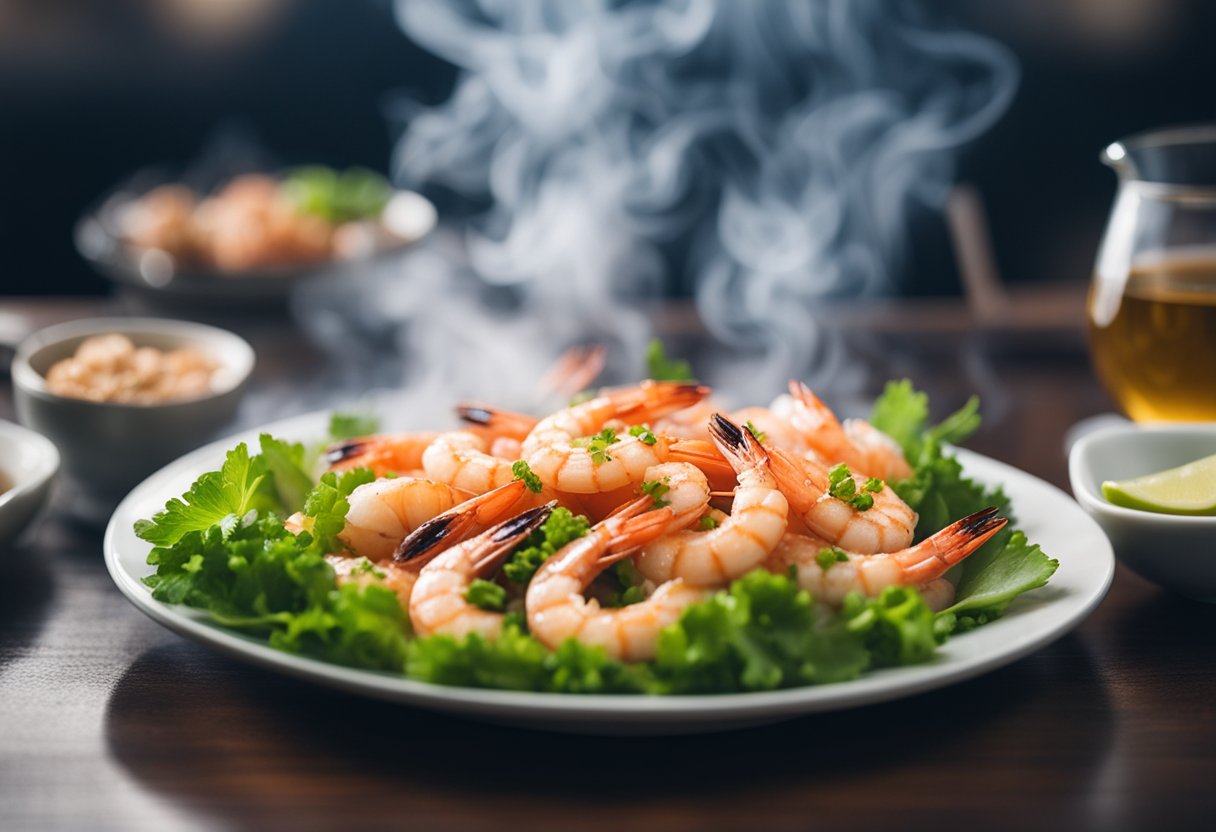
As someone who has microwaved cooked shrimp before, I know that it can be a quick and easy way to prepare this tasty seafood.
However, microwaving shrimp can sometimes result in a loss of flavor. Fortunately, there are several ways to enhance the taste of microwaved shrimp.
One simple way to add flavor to microwaved shrimp is to use butter or olive oil. Adding a small amount of either of these fats to the shrimp before microwaving can help to keep the shrimp moist and flavorful.
Additionally, garlic is a great flavor enhancer for shrimp. Simply sauté some garlic in butter or olive oil and then mix the cooked shrimp in with the garlic to add some extra flavor.
Another way to enhance the flavor of microwaved shrimp is to use citrus juice. Lemon or lime juice can add a bright, acidic flavor to the shrimp that can help to balance out the richness of the butter or olive oil.
Additionally, red onion, tomatoes, and cilantro can all be used to add some extra flavor to microwaved shrimp. Simply chop these ingredients finely and mix them in with the cooked shrimp before microwaving.
Finally, seasoning is key when it comes to flavorful shrimp. Salt and pepper are obvious choices, but there are many other seasonings that can be used to add some extra flavor to microwaved shrimp.
Old Bay seasoning, Cajun seasoning, and chili powder are all great options for adding some spice to your shrimp.
In summary, there are many ways to enhance the flavor of microwaved shrimp.
By using butter or olive oil, garlic, citrus juice, red onion, tomatoes, cilantro, and seasoning, you can ensure that your microwaved shrimp is just as flavorful as if it had been cooked on the stove or grill.
Reheating Cooked Shrimp in the Microwave
As a seafood lover, I often find myself with leftover cooked shrimp in the refrigerator.
While reheating shrimp in the microwave is a quick and easy way to enjoy them again, it’s important to do it properly to avoid overcooking and ruining the taste.
To reheat cooked shrimp in the microwave, place them in a microwave-safe dish and cover it with a lid or plastic wrap. This will help retain moisture and prevent the shrimp from drying out.
Next, microwave the shrimp on high in one-minute increments until they are warm all the way through. Be sure not to overcook the shrimp, as this can make them rubbery and ruin the taste.
If you are reheating a large amount of shrimp, you may need to stir them halfway through to ensure even heating.
It’s important to note that reheating cooked shrimp in the microwave is safe, but it’s not recommended to reheat them more than once.
If you have leftover reheated shrimp, it’s best to discard them rather than refrigerating or freezing them again.
Overall, reheating cooked shrimp in the microwave is a convenient way to enjoy leftovers. Just be sure to follow the proper steps to avoid overcooking and ruining the taste.
Alternative Cooking Methods for Shrimp
When it comes to cooking shrimp, there are many options beyond microwaving. Here are some alternative cooking methods for shrimp that you can try:
Oven
One way to cook shrimp is in the oven. Preheat your oven to 400°F (204°C) and place the shrimp on a baking sheet.
Drizzle with olive oil or butter and season with salt, pepper, and any other desired spices. Bake for 8-10 minutes, or until the shrimp are pink and cooked through.
Grill
Grilling shrimp is another tasty option. Preheat your grill to medium-high heat. Thread the shrimp onto skewers and brush with olive oil or melted butter.
Season with salt, pepper, and any other desired spices. Grill for 2-3 minutes per side, or until the shrimp are pink and cooked through.
Stove
Shrimp can also be cooked on the stove. Heat a skillet over medium-high heat and add a tablespoon of olive oil or butter.
Add the shrimp to the skillet and season with salt, pepper, and any other desired spices. Cook for 2-3 minutes per side, or until the shrimp are pink and cooked through.
Steam
Steaming shrimp is a healthy and easy cooking method. Fill a pot with 1-2 inches of water and bring to a boil. Place the shrimp in a steamer basket and place the basket over the pot.
Cover and steam for 2-3 minutes, or until the shrimp are pink and cooked through.
Fry
Frying shrimp is a popular option, but it can be high in calories and fat. Heat a skillet with enough oil to cover the bottom over medium-high heat. Dip the shrimp in a batter of flour, egg, and seasoning, and then fry for 2-3 minutes per side, or until golden brown and cooked through.
Sauté
Sautéing shrimp is another quick and easy option. Heat a skillet over medium-high heat and add a tablespoon of olive oil or butter.
Add the shrimp to the skillet and season with salt, pepper, and any other desired spices. Cook for 2-3 minutes per side, or until the shrimp are pink and cooked through.
Bake
Baking shrimp is a healthy and easy option. Preheat your oven to 400°F (204°C) and place the shrimp on a baking sheet.
Drizzle with olive oil or butter and season with salt, pepper, and any other desired spices. Bake for 8-10 minutes, or until the shrimp are pink and cooked through.
These are just a few alternative cooking methods for shrimp. Experiment with different techniques to find the best way to cook shrimp that suits your taste buds.
Incorporating Microwaved Shrimp into Dishes
Microwaving cooked shrimp is a quick and easy way to add protein to many dishes. Here are a few ideas for incorporating microwaved shrimp into your meals:
Pasta
Microwaved shrimp can be a great addition to pasta dishes. One classic recipe is Italian Fettuccini Alfredo. To make this dish, cook fettuccini according to package instructions.
In a separate bowl, mix together melted butter, heavy cream, and grated Parmesan cheese. Microwave cooked shrimp for 1-2 minutes, or until heated through.
Add the shrimp to the sauce and toss with the cooked pasta. Serve immediately.
Salads
Microwaved shrimp can also be used to add protein to salads. One classic recipe is shrimp cocktail salad. To make this dish, arrange cooked shrimp on a bed of lettuce.
Mix together ketchup, horseradish, lemon juice, and Worcestershire sauce to make the cocktail sauce. Drizzle the sauce over the shrimp and serve.
Coconut Shrimp
Microwaved shrimp can also be used to make coconut shrimp. To make this dish, mix together shredded coconut, flour, and salt. Dip cooked shrimp in beaten egg, then coat with the coconut mixture.
Microwave the shrimp for 1-2 minutes, or until heated through and the coconut is toasted. Serve with sweet chili sauce for dipping.
Lunch or Dinner
Microwaved shrimp can be a great addition to any lunch or dinner. To make a quick and easy shrimp stir-fry, microwave cooked shrimp for 1-2 minutes, or until heated through.
In a separate pan, sauté chopped vegetables in oil until tender. Add the shrimp to the pan and stir to combine. Serve over rice.
Overall, microwaved shrimp can be a versatile and tasty addition to many dishes. Whether you’re making pasta, salads, or coconut shrimp, microwaved shrimp can add protein and flavor to your meals.
Handling and Storing Shrimp
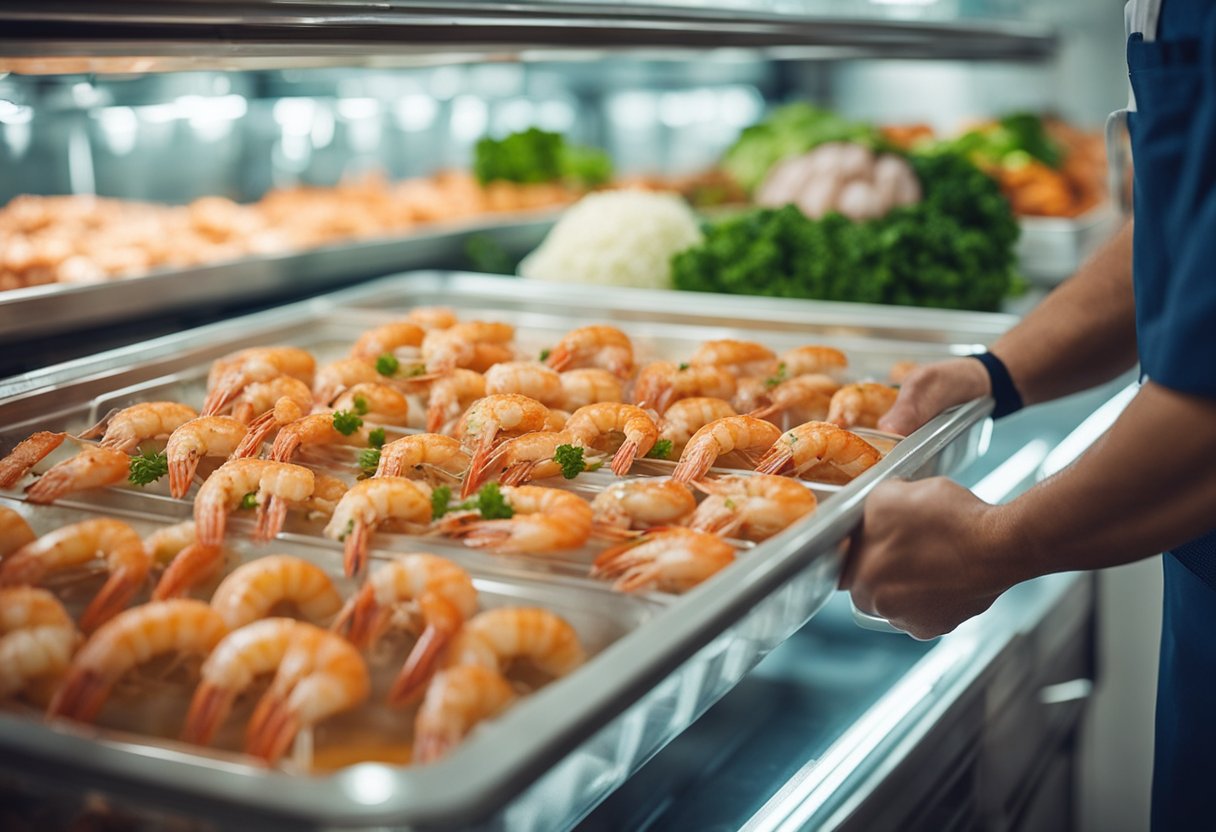
As a personal chef, I often get asked if cooked shrimp can be reheated in the microwave. The answer is yes, but it’s important to handle and store the shrimp properly to avoid any foodborne illness or food poisoning.
Firstly, it’s important to refrigerate cooked shrimp within two hours of removing it from a heat source. This will help to prevent bacteria growth and prolong the shelf life of the shrimp.
If you’re not planning on consuming the shrimp within four days, it’s best to freeze it in an airtight plastic container to maintain its quality and freshness.
When reheating cooked shrimp in the microwave, it’s important to follow a few simple steps to ensure that the shrimp is heated thoroughly without becoming rubbery or overcooked.
Place the shrimp in the microwave and heat them on high in one-minute increments until they are warm all the way through. Be sure not to overcook the shrimp as this can make them rubbery and ruin the taste.
After reheating the shrimp, it can be added to your favorite dish or eaten as is. If you have any leftover shrimp, it’s best to store it in an airtight plastic container in the refrigerator or freezer to maintain its quality and freshness.
In summary, handling and storing cooked shrimp properly is essential to prevent any foodborne illness or food poisoning.
Refrigerate cooked shrimp within two hours of removing it from a heat source and freeze it in an airtight plastic container if you’re not planning on consuming it within four days.
When reheating cooked shrimp in the microwave, be sure to follow the simple steps to ensure that the shrimp is heated thoroughly without becoming rubbery or overcooked.
Health Benefits and Nutritional Value of Shrimp
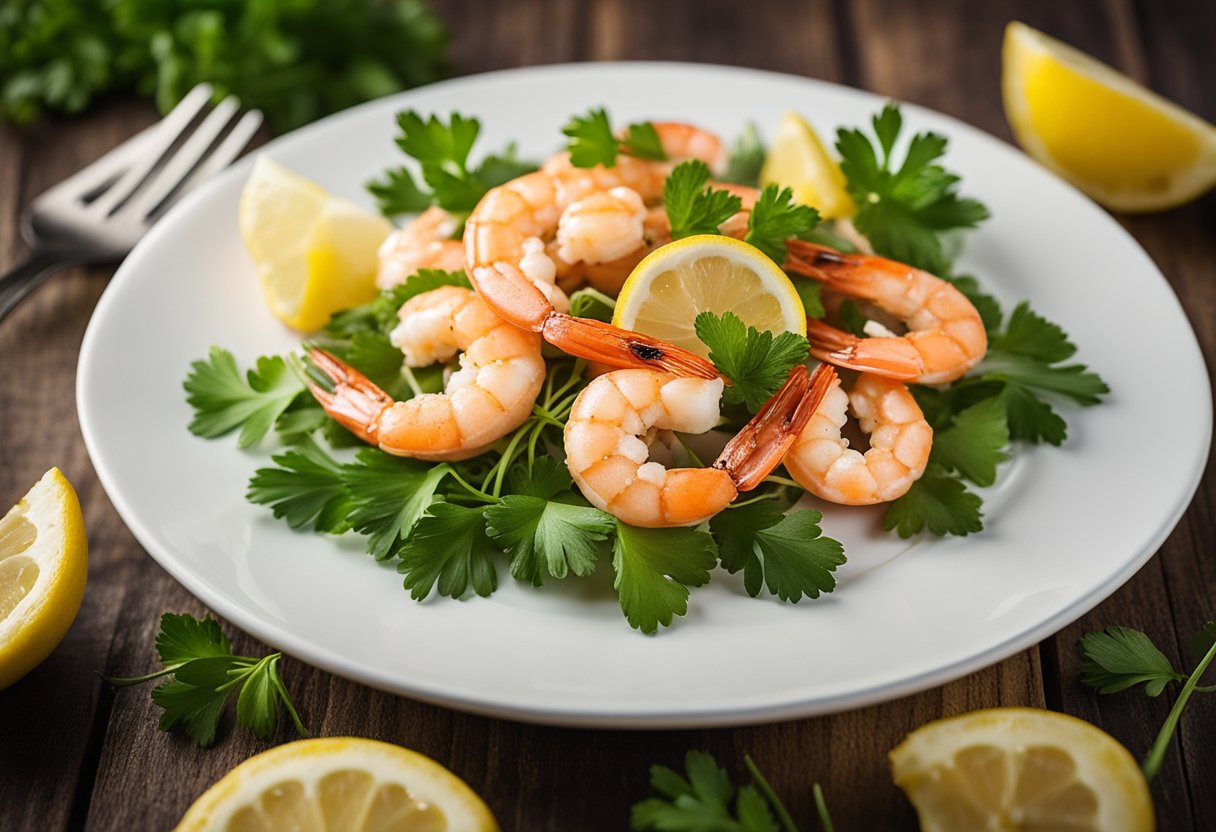
As a seafood lover, I often wonder about the nutritional value of the foods I eat.
Shrimp is a popular seafood that is enjoyed by many, but what are the health benefits and nutritional value of shrimp? I did some research and found some interesting information.
Shrimp is a low-calorie food that is high in protein. A 3-ounce serving of cooked shrimp contains about 84 calories and 20 grams of protein.
This makes shrimp an excellent choice for those who are looking to maintain a healthy weight while still getting the necessary nutrients.
In addition to being low in calories and high in protein, shrimp is also low in carbohydrates and fats. A 3-ounce serving of cooked shrimp contains only 0.2 grams of carbs and 0.2 grams of fat.
This makes shrimp a great option for those who are on a low-carb or low-fat diet.
Shrimp is also packed with nutrients that are essential for good health. A 3-ounce serving of cooked shrimp contains about 161 milligrams of cholesterol, which is important for brain function and hormone production.
Shrimp is also a good source of vitamin B12, which is important for nerve function and the production of red blood cells.
Furthermore, shrimp is rich in minerals such as selenium, zinc, and copper. These minerals are important for maintaining a healthy immune system, promoting wound healing, and reducing inflammation in the body.
In conclusion, shrimp is a delicious and nutritious seafood that is low in calories, high in protein, and packed with essential nutrients.
Whether you are looking to maintain a healthy weight or simply want to enjoy a tasty seafood dish, shrimp is an excellent choice.
Conclusion
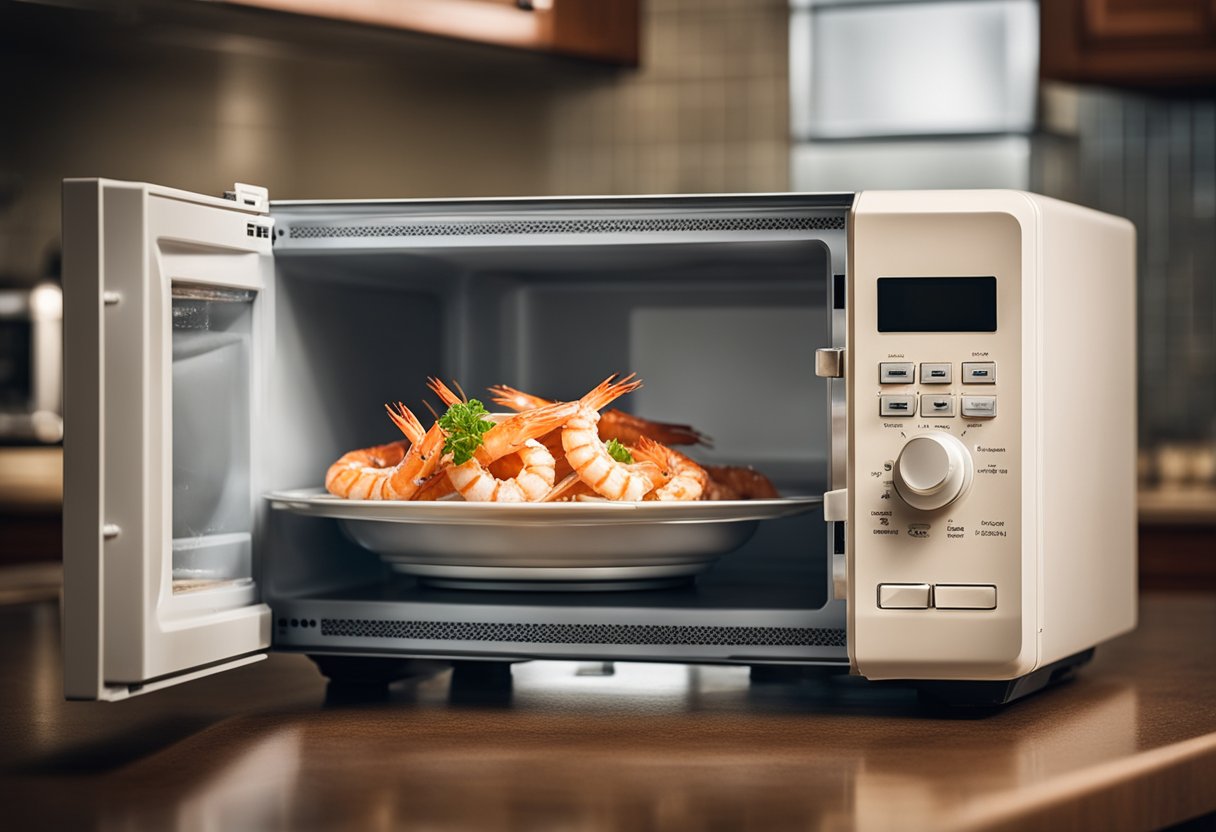
In conclusion, reheating cooked shrimp in the microwave is safe as long as you follow a few important guidelines.
First and foremost, it’s essential to store your cooked shrimp in the refrigerator within two hours of cooking to avoid foodborne illness.
Additionally, you should always cover the shrimp with a microwave-safe lid or plastic wrap to prevent splatters and to ensure even cooking.
While it is possible to cook shrimp in the microwave, it is not the best method for cooking them. The high energy radiation in microwaves can cause the shrimp to cook unevenly and develop a rubbery texture.
Therefore, it’s recommended to use other cooking methods such as grilling, sautéing, or boiling to ensure the best taste and texture.
It’s also worth noting that the microwave cooking time depends on the size and number of shrimp, so it’s important to check the shrimp frequently while microwaving them.
Overcooking can lead to a tough and chewy texture, so it’s better to undercook them slightly and let them rest for a few minutes to finish cooking.
In summary, while microwaving cooked shrimp is safe, it’s not the best method for cooking them. It’s recommended to use other cooking methods to ensure the best taste and texture.
Always follow the guidelines for safe food handling and preparation to avoid foodborne illness.
Frequently Asked Questions
How do you reheat cooked shrimp in the microwave?
To reheat cooked shrimp in the microwave, place the shrimp in a microwave-safe dish and cover it with a lid or plastic wrap.
Then, microwave the shrimp on high for 30-second intervals until it is heated through. Be careful not to overcook the shrimp, as this can make it tough and rubbery.
Can you microwave already cooked shrimp?
Yes, you can microwave already cooked shrimp. Just be sure to follow the proper reheating instructions to prevent the shrimp from becoming overcooked and rubbery.
Is it safe to eat microwaved shrimp?
Yes, it is safe to eat microwaved shrimp as long as it is cooked to the proper temperature and reheated correctly.
However, microwaving shrimp can cause it to become overcooked and rubbery, so it’s important to be careful when reheating it in the microwave.
What is the best way to reheat shrimp scampi in the microwave?
To reheat shrimp scampi in the microwave, place the dish in a microwave-safe container and cover it with a lid or plastic wrap.
Microwave the dish on high for 30-second intervals until it is heated through. Be sure to stir the shrimp scampi occasionally to ensure that it is evenly heated.
How long should you microwave cooked shrimp?
The amount of time it takes to microwave cooked shrimp will depend on the size and quantity of the shrimp. In general, you should microwave shrimp on high for 30-second intervals until it is heated through.
Be sure to check the shrimp after each interval to prevent overcooking.
Can you reheat shrimp pasta in the microwave?
Yes, you can reheat shrimp pasta in the microwave. To do so, place the pasta in a microwave-safe dish and cover it with a lid or plastic wrap.
Microwave the dish on high for 30-second intervals until it is heated through. Be sure to stir the pasta occasionally to ensure that it is evenly heated.



